For the fourth installment of our column “5×7” – in which we pose seven questions to five people who have similar careers, practices, or interests – we asked artists about the art culture in their particular cities, their favorite piece of art writing, their wackiest experiences, and what they do in their free time – when they have some. We are pleased to have participating artists Anthony (Thony) Auippy, a Jacksonville-based artist, art educator, and writer who holds an MFA in Painting from SCAD and currently teaches at the University of North Florida; Katrina Andry, an artist with a BFA in printmaking from New Orleans whose work explores the negative effects stereotypes have on people of color; Lauren Clay, a SCAD graduate living in New York who is known for her marbled 2D and 3D works as well as sculpture; Benjamin Britton, an Athens-based artist who teaches drawing and painting at the Lamar Dodd School of Art; and Candice Greathouse & Curtis Ames, two Atlanta-based artists who often work together on exhibitions throughout Georgia.
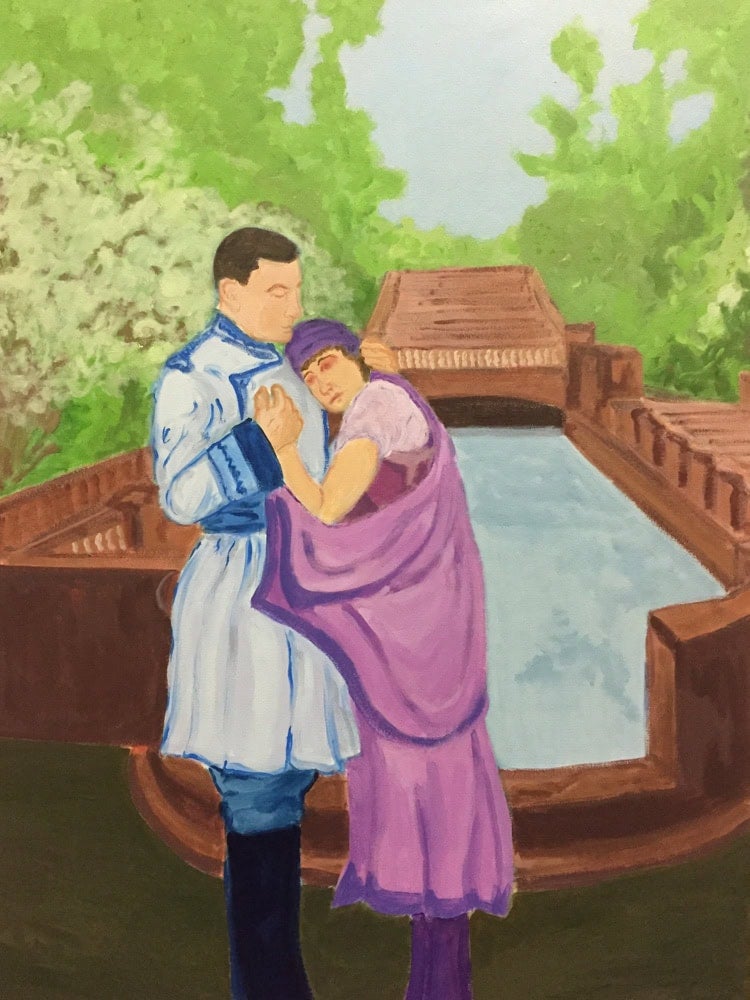
What made you chose to live in the city that you’re currently in?
Anthony Auippy: I live in Jacksonville because my family and I feel connected and called to the community. My wife teaches private music lessons and I am the J. Wayne and Delores Barr Weaver Educator for Families and Children’s Programs at MOCA Jacksonville. We are a part of the burgeoning art community and find value in being a part of that group and seeing it grow to its fullest potential.
Katrina Andry: I’m a New Orleans native, and while I did move away a few times in my adult life, I’ve always been drawn right back to this city. Besides being a culturally dense city, I always tell people it’s one of the most jealous cities I’ve ever lived in. New Orleans really doesn’t like people to leave her. I’ve also been lucky enough to have a home here that has a space for me to have a studio. A lot of artists don’t have the luxury of a home studio. That would be hard to leave behind.
Lauren Clay: I naively decided I would move to New York when I was still an undergraduate at SCAD, living in Savannah. I would obsessively scan art magazines and the internet to try to figure out what was going on in the New York art world. I decided at that time that I wanted to be a part of it, even though I was debilitatingly shy and the idea scared the hell out of me. After SCAD, I lived for a year in Atlanta, and then went to grad school at Virginia Commonwealth University in Richmond, Virginia. I moved to New York in 2007 immediately after finishing grad school.I moved here for all of the reasons an artist moves to New York. I love it now. It’s home. I love my community of artists, and the life I have here.
Benjamin Britton: I moved to Athens for a job at UGA, but I think the story might’ve been different if Athens wasn’t someplace I’d been hearing about since the 8th grade on account of the rock ’n roll thing. I’ve met some very dear friends in Athens and they make it a really fun place to be. Also I barely have to drive except to go to Atlanta, which, coming from L.A., was a plus.
Candice Greathouse & Curtis Ames:
CG: I’m moving! Headed to Los Angeles this summer – finally escaping the Southeastern triangle (GA, FL, AL) after 30 years. The last 10 years in Atlanta have been amazing though. Seriously more than I can say.
CA: I’ll be moving too, of course. I will continue to maintain my studio at the Metropolitan, however, and I’ll be back as often as I can to make work in preparation for my solo show at Swan Coach House next year.
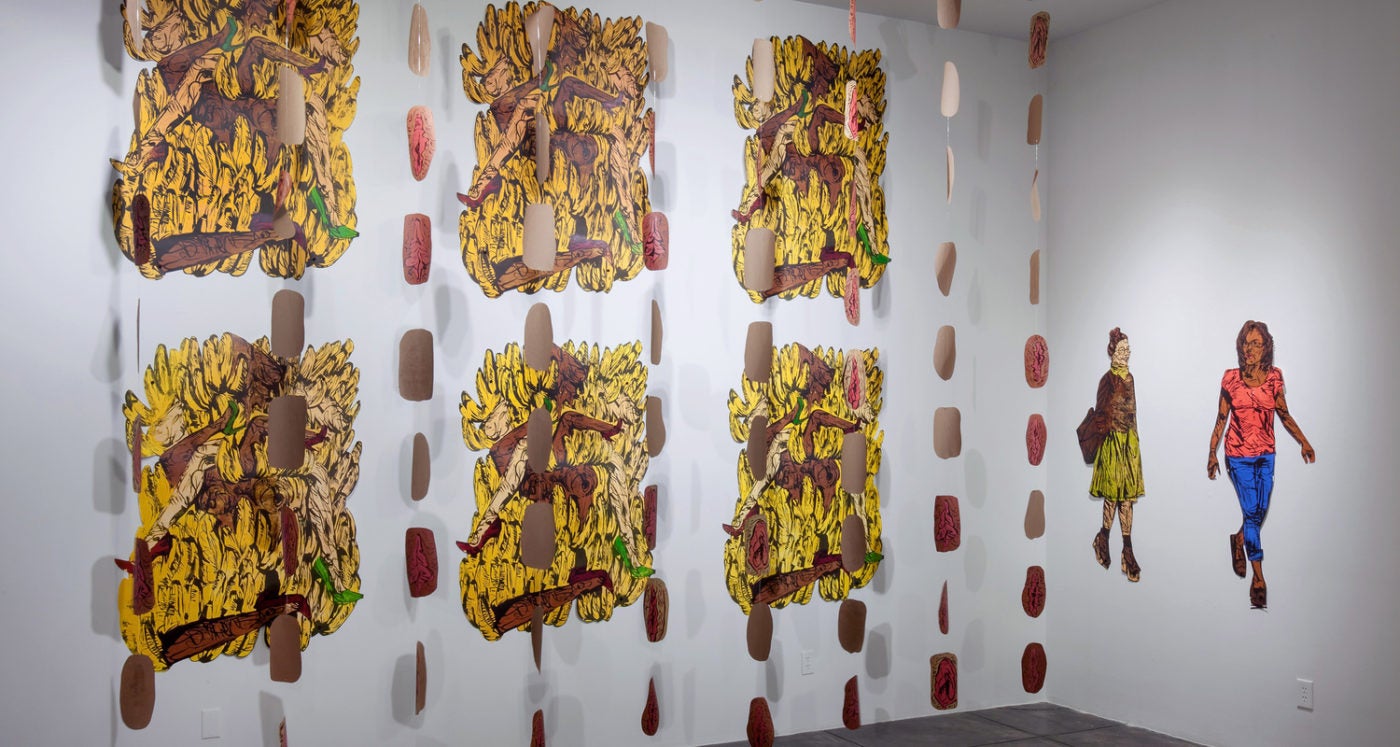
What would make your city a better place to live for artists?
Auippy: For artists to thrive in Jacksonville, more gallery representation and funding opportunities would be at the top of my list. In addition, I think artists living in the city would benefit from workshops and programs targeted to professional development and marketing strategies. With state budget cuts, as is happening right now in Florida, the arts are first to go, both for individual artists and art education. This affects me as both a practicing artist and an art educator with the museum. Residencies would be another thing that I believe would bring vitality to Jacksonville. Long Road Projects (Aaron and Stevie Garvey) have done a fantastic job over the last couple of years bringing artists, allowing to create work, exhibiting to the public and showcasing the assets our community brings to the table and allowing our artists to connect with them in ways we haven’t seen before.
Andry: New Orleans has a very small collectors’ pool that artists are trying to reach. One reason for that is extreme income inequality, and another is the lack of art understanding. Collectors here tend to be “of the moment,” “whatever’s trending in the New Orleans scene,” which isn’t viable for working artists. Outsiders who tend to buy art in New Orleans are tourists looking for a work that commemorates their vacation. So, think photos, paintings, or prints of beignets. People aren’t necessarily coming here to buy fine art. And people that live here aren’t as educated in the arts and as a result there isn’t a lot of funding for the visual arts. A triennial here, Prospect, could also do more to better include living New Orleans artists.
Clay: New York would be a much better place for artists if studios were more affordable. Living in New York is expensive. For a young artist, renting a studio on top of everything else is insane. The cost of studio spaces in my neighborhood (which used to be a pretty rough, industrial neighborhood) has nearly tripled in the past five years. There are so many artists moving here, an entire industry has formed around turning warehouses into artists studios. Sometimes wonder if the art scene in New York would be a little more exciting and experimental if the artists didn’t have such high overhead.
Britton: The things that would make Athens better for artists are the same that would make them better for everyone else; single payer healthcare free at the point-of-service to all residents documented or undocumented, student loan debt forgiveness (and free college), free childcare, clean air and water, livable wages, rent control, great public transit, and safe bike-friendly and walkable streets. I would add to that dismantling the system of mass-incarceration and militarized policing, decriminalizing drugs, voting on a national holiday, and giving statehood to Puerto Rico (if the people of Puerto Rico decide they want it) and Washington D.C. Might as well smash the war machine and fund the public schools down to about a 10:1 teacher student ratio with the savings while we’re at it. Athens would really be the place to be if all that went down!
Greathouse & Ames:
CG: More funding more residencies more galleries more collectors more artists more everything especially more respect for conceptual work. Less artists giving art they don’t understand attitude. More feminist art.
CA: Ditto. That’s not to say that Atlanta and its institutions and galleries don’t provide an adequate system for the artists they support, but it would be nice if there were more.
CG: Exactly.

What is your favorite piece of art writing in the past five years, and of all time?
Auippy: I lead a program at MOCA called Voice of the People. Fourth grade students select artworks from the museum’s permanent collection and the write essays based on their selection. They’re practicing art criticism without even knowing it. We turn the essays into audio guides that the public can listen to. There’s one in particular that a girl wrote this year about for a piece called Hedge Sky by Sam Gilliam. She talked about how his draped canvas represents a flag of artist’s emotions. That just does me in every time. My favorite art writing of all time is Philip Guston’s “Collected Writing, Lectures, and Conversations.”
Andry: There’s an article by Krista Thompson, written for Art Journal called “A Sidelong Glance: The Practice of African Diaspora Art History in the United States” which is a very relevant and poignant article about art history teaching; how African art and diaspora art tend to get lumped into the same category when they are in fact not the same. The art isn’t even made on the same continent, much less share a history. That article hit home for me. It emphasized how trivialized Black art is in Western society.
Clay: I really don’t enjoy reading about art. It makes me feel neurotic and stifled in my studio. I’d much rather read things that fire my imagination and inspire my studio practice. For example I spent much of last year studying ancient Yogic texts, such as the Hatha Pradipika, Bhagavad Gita, etc. I also love science fiction. Last year I also read and listened to almost all of Ursula K. Le Guin and Octavia Butler’s novels.
Britton: Amy Sillman’s letter to Jackie Saccoccio (in Bomb magazine) about how her and abstraction broke up puts the abstraction / representation dialogue right where it dwells, I think. Also Molly Zuckerman-Hartung’s “95 Theses on Painting” always makes me feel better when I read it.
Greathouse & Ames:
CG: Currently Helen Molesworth’s, “How to Install Art as a Feminist” – I just saw her interview Catherine Opie at CAA, literally days before the whole thing with MOCA. Her writing is necessary and urgent. All time? Probably Carolee Schneemann’s personal writings.
CA: I’m currently reading Maggie Nelson’s “Argonauts”, which isn’t necessarily ‘art writing’ but I would definitely consider it a work of art that happens to be written.
As far as my favorite piece of art writing of all time goes, I can’t limit my response to a singular publication. Sharon Butler’s “The New Casualists”, Svetlana Boym’s “The Future of Nostalgia”, Boris Groys’ “The Weak Universalism”, and Georges Bataille’s “The Unfinished System of Nonknowledge” all had a significant and profound impact on me and my work.
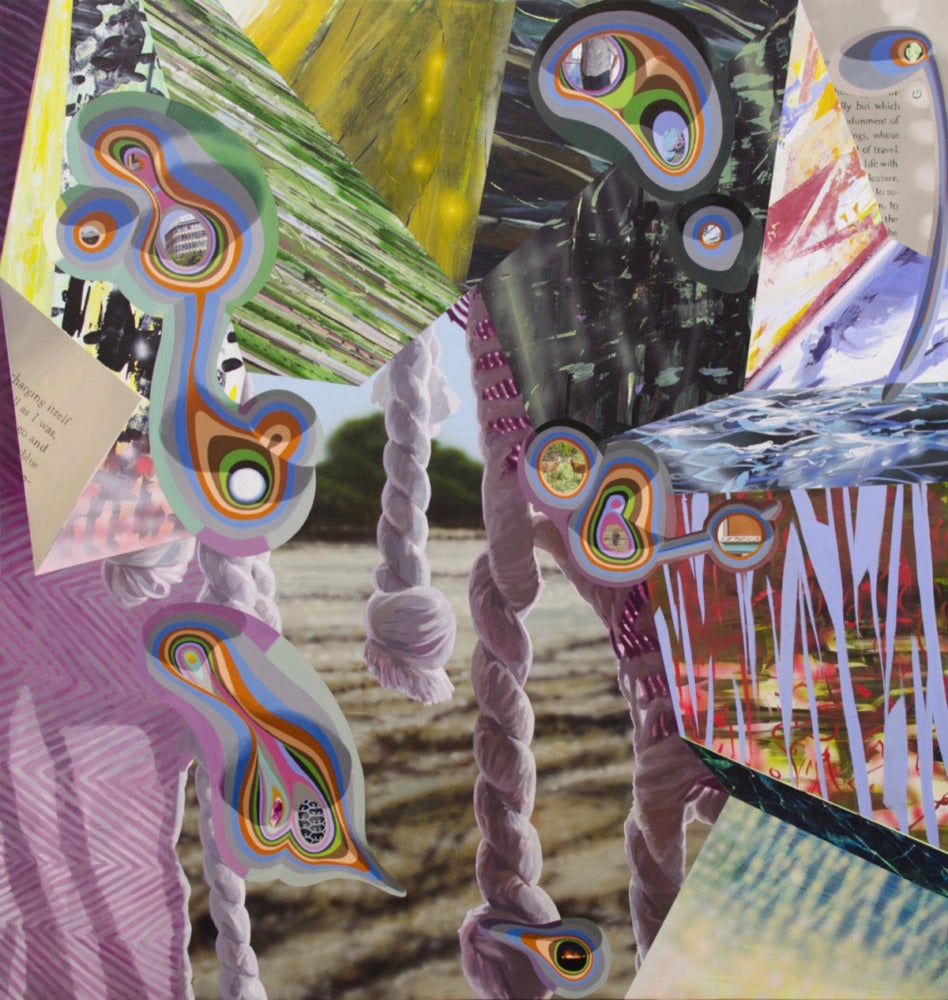
Do you have a day job?
Auippy: Yes. I am the J. Wayne and Delores Barr Weaver Educator for Families and Children’s Programs at MOCA Jacksonville.
Andry: I do have a day job…I have a few day jobs, actually. Haha. I’m a Project Manager at a small art organization. I’m the Visual Arts Director of the African Diaspora Consortium. I’m a landlord. And most importantly I’m the mother of twin toddlers, and a wife to a very loving and supportive husband
Clay: Currently I work part-time for another artist. I help him plan exhibitions and large installations. I get to be involved in his creative process, which I find interesting. I’ve worked for him for a long time and he is extremely generous and supportive. My schedule is flexible and I’m able to take off time for shows, etc.
Britton: I am an assistant professor at the Lamar Dodd School of Art at the University of Georgia. In the art school assistant professors do teaching and research (“making art” in academic terms). The teaching part of the job involves teaching two courses each semester, which can be anything from beginning drawing to MFA thesis. So, the students in my classes are undergraduate and graduate students taking studio and seminar classes. The other part of the job is really just to do my work, which is solidly not a traditional day job, more like directly paying an artist to make art. I’m really grateful to work there.
Greathouse & Ames:
CG: Teaching at the university level – photography, foundations, and art history.
CA: I’m currently an art handler.
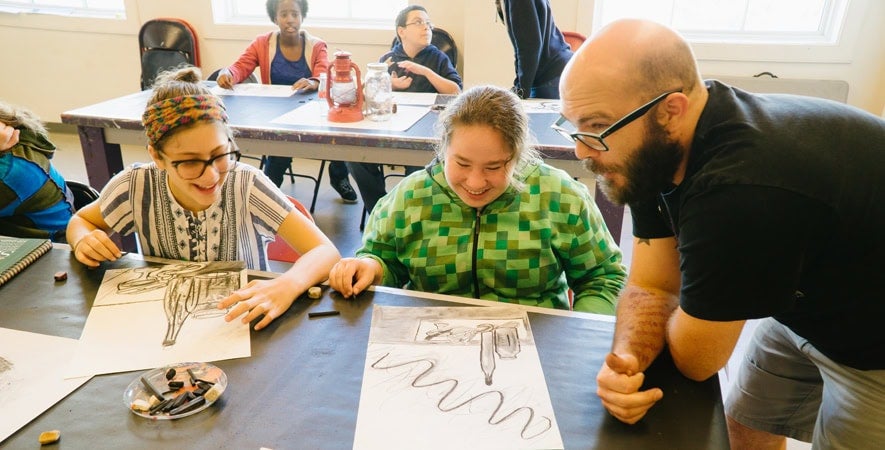
Do you donate to benefit auctions? Why or why not?
Auippy: I donate to auctions I believe in, usually if it’s promoting arts and arts education.
Andry: The short answer is “it depends.” I tend not to donate art, unless I’m close with the person who asks me. Artists get asked a lot if they’ll donate to a cause I think mostly because we create something tangible, and also people tend to assume that because we like to create art that we’re always happy to do so because it means we get to create…which isn’t true. I won’t create work for an auction, but I have some little silkscreens that I did over a decade ago that’s my go-to donate pile.
Clay: Yes! I enjoy donating to benefits because I like supporting institutions that I admire. I’m not able to donate money but I can donate art. Also, usually someone cool ends up owning my work!
Britton: Yes, but not always. When I do I like to donate something that is on another tangent from the work I usually show.
Greathouse & Ames:
CG: Absolutely yes. I love an art party.
CA: Yes. I think it’s crucial to support the institutions that support you.
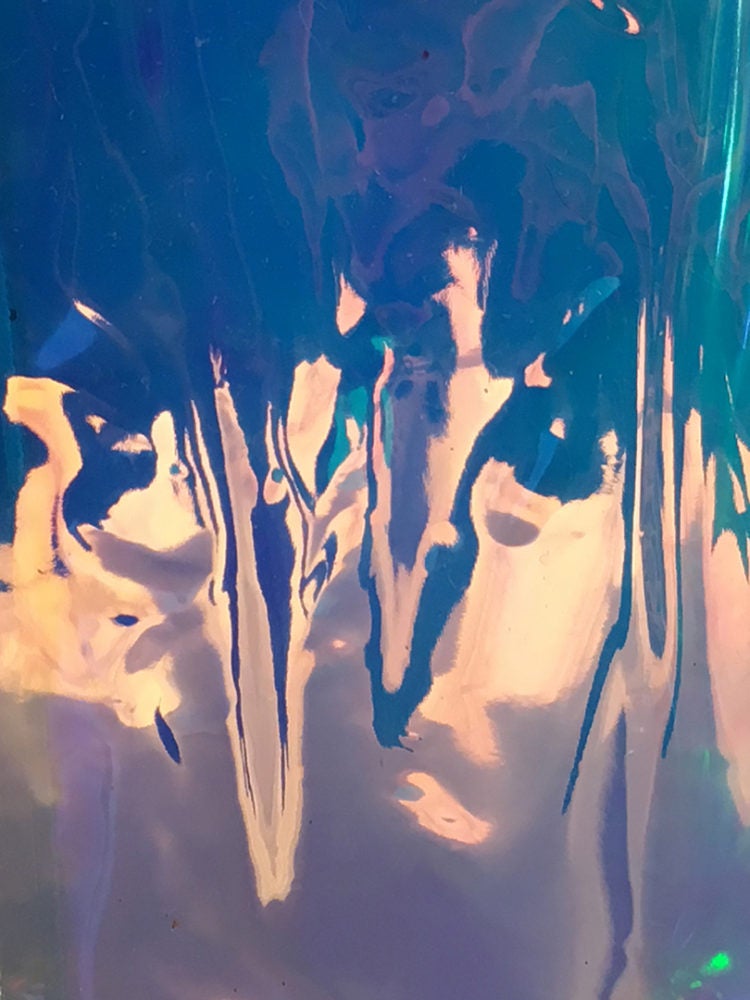
What’s your wackiest art experience and why?
Auippy: One of my wackiest art experiences is finding out that one of my paintings was turned into a shrine at my alma mater. Prayer candles and sticky note prayers used to surround this painting that was dubbed “Monty Jesus.” Totally weird.
Andry: I’m blessed enough to not have a wacky art experience. I will say that ordering and having delivered the 4′ x 7′ monotype press from Conrad Co. was a doozy. I paid many many friends in pizza to unpack, move, and assemble that behemoth of a printing press. I was pregnant at the time and of no help.
Clay: In 2004 while I was living in Atlanta, I had my first little solo show in the small project space at Eyedrum. This was when Eyedrum was still located on MLK. After the show was over, I deinstalled my show and put all of the work in the trunk of my car. That night there was a horrible ice storm in Atlanta. I had only been home about an hour when I heard some LOUD cracks like gun shots outside of my house. I looked outside and a HUGE oak tree had fallen on my car— like a hot dog in a hot dog bun.
The car and all of my work was totally destroyed. The next day, in some miraculous, gracious act of southern kindness, someone from the city of Decatur knocked on our door. They said the tree was on the city’s property and that their insurance would reimburse me for the car. They also reimbursed me for all of my artwork!
Britton: Besides the overall wackiness and impossibility of still doing this thing somehow in an economy that does not usually sustain people who make unique somethings for sale which rarely sell, I would say the second summer in L.A. after grad school that I had a job working for the estate of an artist re-creating a sculpture of theirs felt pretty wacky (in a good way).
I couldn’t believe I was (finally) paid a dignified wage to work in the art world and assemble these tiny models with my best friends. We’d tell stories that lasted hours, because we were just sitting there together at big folding table connecting little parts. We had all summer to do the work so the schedule fell evenly around days with south swell. There were a pair of owlets hatched in a hollow of the cliff above our favorite surf spot and I shaped a new board, painted an owl head on it and called it the Moist Owlet. The decent funds kept gas in a white two-door hatchback with a bit of pink duct-tape around the window to keep out the rain (should it ever have rained again) and a stick to hold up the back hatch. Am I romanticizing this enough? There were some tears that summer too but the onions that caused them are caramelized and brown now. I may have also painted a bit in my studio on Burnside Avenue in L.A. It was a summer of note. All due to the international art world!
Greathouse & Ames:
CG: I was once proposed to at Walter de Maria’s The New York Earth Room.
CA: Gross.
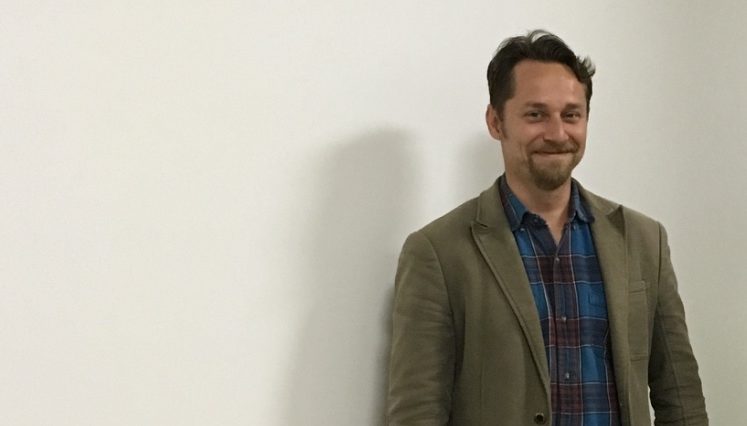
What do you do for fun, besides art-making and art-viewing?
Auippy: I read comic books, play the Super Nintendo with my oldest son, and work on my writing craft. My family lives in Historic Springfield, so we like to walk or bike around and hang out with our friends.
Andry: Two things that I love and that I wish I had more time for are going for walks and knitting. I go for walks with my family on the weekends (most weekends) but I haven’t had the time to knit in almost two years. It’s so relaxing and at the end of it, you have a product.
Clay: I really don’t have much free time, but when I do, I absolutely love to travel with my boyfriend. I love going new places. I’m also obsessed with my cats and spend a lot of evenings chilling at home with them.
Britton: Let the day unfold; hang out with friends, go outside, and drive somewhere to go surf if it’s very wavy.
Greathouse & Ames:
CG: Tacos.
CA: Margaritas and Ridley Scott’s ALIEN




